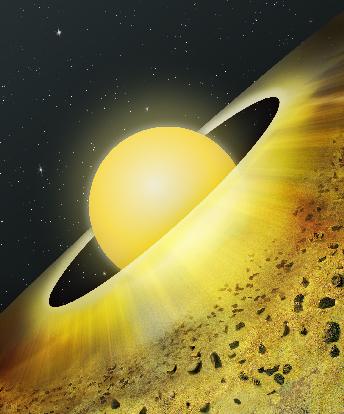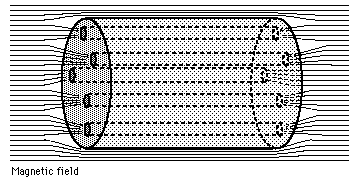Nanoparticles can suddenly transform and replicate, behaving and becoming like gigantic fractal atoms, rapidly organizing smaller nanoparticle sizes into larger-scale hierarchical chain structures. Zheng's highly acceptable new theory could imply that the universe is organized by similar "top-down" phenomena, from "larger to smaller sizes" having hierarchical chain type symmetry interactions. This two way interaction between larger and smaller constituents comprising the universe, is profoundly lacking in the beginning by singularity of the big-bang cosmology. The nanoscale is the cosmological bridge composed of metamaterials that far exceeds the mimicking of gravity, linking and connecting together atoms with larger-scale structures, including planets, stars, and galaxies.
"A connecting link between single molecules and hierarchical nanostructures", Zheng says.
"Real-Time Imaging of Pt3Fe Nanorod growth in Solution" by Zheng.
Haimei Zheng scientist at Berkeley Lab Materials got the team credit for how attached nanoparticles evolve into nanorods. Real-time observations of growing nanorods from nanoparticles, showed a sudden single nanoparticle transformation, when they started acting like artificial atoms during crystal growth. Only single nanoparticles exist at first during the beginning of crystal growth, until small chains of nanoparticles dominate, until ultimately only long chains exist. Zheng says "as nanoparticles become attached they initially form winding polycrystalline chains, that eventually align and attach end-to-end to form nanowires that straighten and stretch into single crystal nanorods with length-to-thickness ratios up to 40:1." The milky way galaxy's central bulge or magnetic bar length-to-thickness ratio is 27:1 and the milky way galaxy is 1,000 light years thick, 100,000 light years in diameter length, with an elongated central bulge bar structure stretching 27,000 light years from end-to-end, which supports the theory that nanoparticles shape galaxies and disks.
Dusty protostar disk around TW Hydrae is likely forming by nanoparticles that are aligned and oriented in the same shape as the solar system us disk. Giant nanoscale atoms further align to make planets and stars. Nanoscale cosmology theory.
Nanoscale graphene structures are tunable vibration wave plasmonic mediums having electrical and magnetic links connecting together quantum physics theories and cosmology.
  |
| When nanoparticles become like giant fractal atoms |
 |
| Dr Haimei Zheng at Berkeley Lab's Materials Sciences |
Haimei Zheng scientist at Berkeley Lab Materials got the team credit for how attached nanoparticles evolve into nanorods. Real-time observations of growing nanorods from nanoparticles, showed a sudden single nanoparticle transformation, when they started acting like artificial atoms during crystal growth. Only single nanoparticles exist at first during the beginning of crystal growth, until small chains of nanoparticles dominate, until ultimately only long chains exist. Zheng says "as nanoparticles become attached they initially form winding polycrystalline chains, that eventually align and attach end-to-end to form nanowires that straighten and stretch into single crystal nanorods with length-to-thickness ratios up to 40:1." The milky way galaxy's central bulge or magnetic bar length-to-thickness ratio is 27:1 and the milky way galaxy is 1,000 light years thick, 100,000 light years in diameter length, with an elongated central bulge bar structure stretching 27,000 light years from end-to-end, which supports the theory that nanoparticles shape galaxies and disks.
A nanotech galaxy model is a good analogy of the milky way.
Dusty protostar disk around TW Hydrae is likely forming by nanoparticles that are aligned and oriented in the same shape as the solar system us disk. Giant nanoscale atoms further align to make planets and stars. Nanoscale cosmology theory.
Nanoscale graphene structures are tunable vibration wave plasmonic mediums having electrical and magnetic links connecting together quantum physics theories and cosmology.











nice written
ReplyDeletegreat
ReplyDeletenice work
ReplyDeletegood
ReplyDeletegreat work
ReplyDeletenice
ReplyDelete